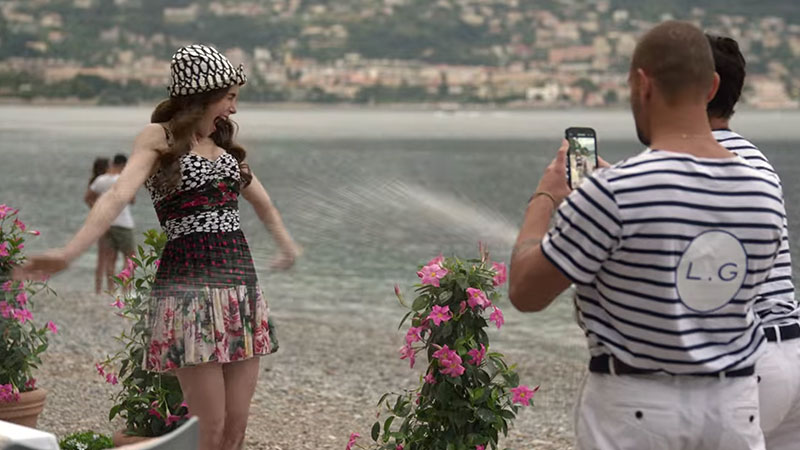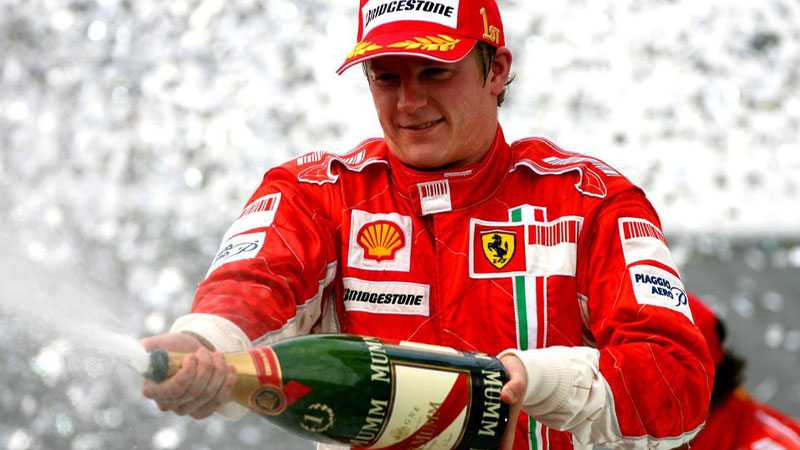The world is pretty dreary these days. Covid is surging again, travel, if not restricted, is complicated, and our wanderlust has been hit with a cold harsh slap in the face. So when “Emily in Paris” Season 2 dropped in December, we breathed a much needed sigh of relief. Yes, the writing is lackluster and the characters are cringy, but who isn’t willing to forgive those things to escape reality for a few hours right now?
If you don’t have the time to dedicate to a TV series about an improbably chic 20-something and her journey abroad, here are the Cliff notes: Emily Cooper’s Chicago-based marketing agency relocates her to its Parisian subsidiary, Savoir, as an American supervisor for the year. As she deals with the trials and tribulations of love and friendships, Emily also meets some interesting clients along the way.

One of those is Champère Champagne, brought to Savoir courtesy of Emily’s Parisian bestie, Camille. Champère’s stock is the surplus bottles from Camille’s parents’ Épernay Champagne house, Le Domaine de Lalisse. An inexpensive and decidedly bad-tasting wine, Camille’s parents launched the brand, named for Camille’s father (who often refers to himself as champère, or father of Champagne in French), but didn’t really know what to do with it.
Don’t miss a drop!
Get the latest in beer, wine, and cocktail culture sent straight to your inbox.
If you think the ensuing storyline plays out like an ad campaign for your average cheap Champagne, though, you would be mistaken. In Season 1, Emily pitches the idea of Champère being “the official spray of Paris,” landing her the client. Season 2 Episode 1 revolves around explaining the intended use of Champère to patrons in St. Tropez. At Laurent G beach club, Emily stops Laurent as he begins to open the bottle. “No! You’re supposed to spray it, not drink it!” she exclaims. She then proceeds to film herself being drenched in the lesser liquid as two handsome servers destroy her Dolce & Gabbana dress. When a St. Tropez yachter tells Camille that Champère “tastes like ass,” she responds with a sassy “because they’re supposed to be sprayed.”
While the language behind the Champère name is clever and it’s intended use seems, er, whimsical, Champagne lovers — and just normal folks — might find the whole premise painful. Could a rancid Champagne label really thrive off of being “the official spray of Paris”? Would people really pay money for this? Has this ever even happened in real life?

The most notable IRL brand that even comes close to resembling Champère might be G. H. Mumm. Though Mumm decidedly does not taste bad, it was for many years the bottle victorious Formula 1 drivers would spray in triumph on the podium. The tradition dates back to 1966, when a bottle of Champagne exploded in Jo Siffert’s hands by accident after he won the 24 Hours of Le Mans race. In that same race in 1967, winner Dan Gurney imitated the moment, and so the tradition was established.
While if it did exist in real life, Champère might have a place in the racing market (and that’s a really big might), it certainly wouldn’t be its intended use. It becomes clear throughout the series that Emily and the Savoir team hope that the wealthy and not wealthy alike will be able to spray the undrinkable Champagne. If this sounds like a totally backward sentiment to you, then we’re on the same page.
When sitting down to an episode or four of “Emily in Paris” it’s safe to assume we’ll be suspending our disbelief — people certainly don’t watch the show for its realistic food and wine commentary. But the Champagne made just for spraying is one designer bucket hat too far. Let’s save the Champagne Showers for the real Champagne Papi and keep the fabulous Paris drinks, fantastical though they may be, in our glasses.


